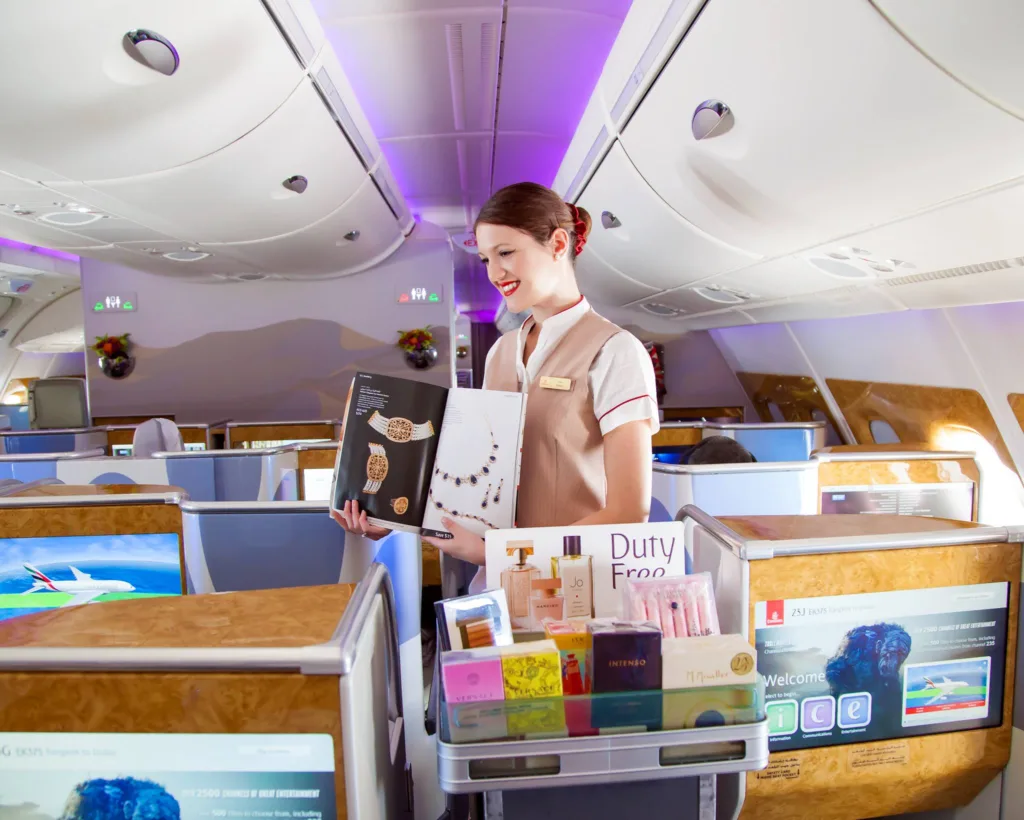Once a staple of international travel, Duty Free shopping at 38,000 feet is rapidly becoming a thing of the past. In the 1990s, it was unimaginable to board a long-haul flight without flipping through an exhaustive catalog of perfumes, liquor, and watches.
Fast-forward to 2025, and most airlines have grounded their inflight retail trolleys, permanently. However, a handful of carriers still offer Duty Free amenities to passengers seeking in-flight indulgence.
So, which airlines with Duty Free shopping are still flying the retail flag? Let’s take a closer look.
Emirates: Luxury Shopping at Cruising Altitude
Dubai-based Emirates has made in-flight Duty Free shopping a core part of its customer experience. Most of the full-service carriers passed on the concept, but Emirates jumped on board, even expanding onboard retail options during the COVID-19 pandemic.
Emirates offers an extensive Duty Free range, ranging from exclusive Dubai Duty Free items to seasonal offers. Passengers are offered printed catalogues in addition to having the option of shopping online, with the hard copies brought to the seat. Ranging from luxury fragrances to limited edition products, Emirates makes duty free shopping in-flight a signature asset on its global network.
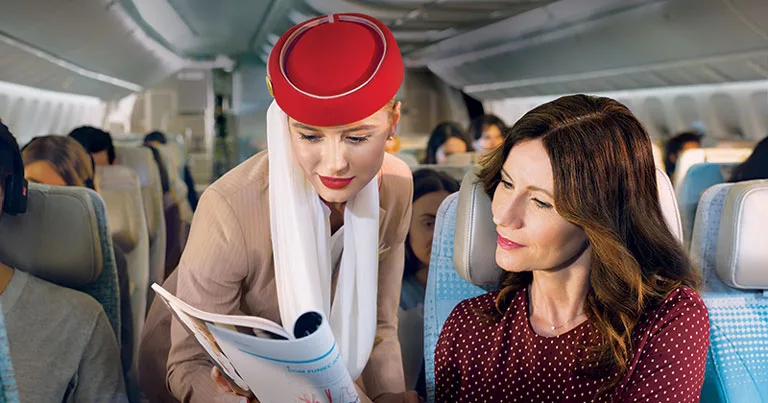
British Airways: Selected Routes and Pre-Orders
British Airways, under IAG ownership, continues to offer Duty Free shopping in-flight, but only across some long-haul routes. London Heathrow services to popular destinations including Toronto and the Maldives feature a modest in-flight shopping service.
However, BA has modernized its approach elsewhere by shifting to a pre-order Duty Free. On most international flights, passengers can pre-order online and receive their purchases onboard. This minimizes aircraft weight and stock management while still catering to passenger demands for onboard shopping.
Iberia: A Surprising Comeback
In a surprise move, Spanish flag carrier Iberia recently reintroduced Duty Free shopping on its long-haul flights. As part of a broader effort to revive traditional inflight experiences, Iberia travelers are now able to shop from a printed catalog and purchase select items on a flight.
This contradicts decades of industry-wide withdrawal from inflight retail. Iberia’s initiative goes against that trend, suggesting Duty Free shopping on airplanes maybe has a future after all, specifically on long-haul international flights where passengers welcome distractions and amenities.
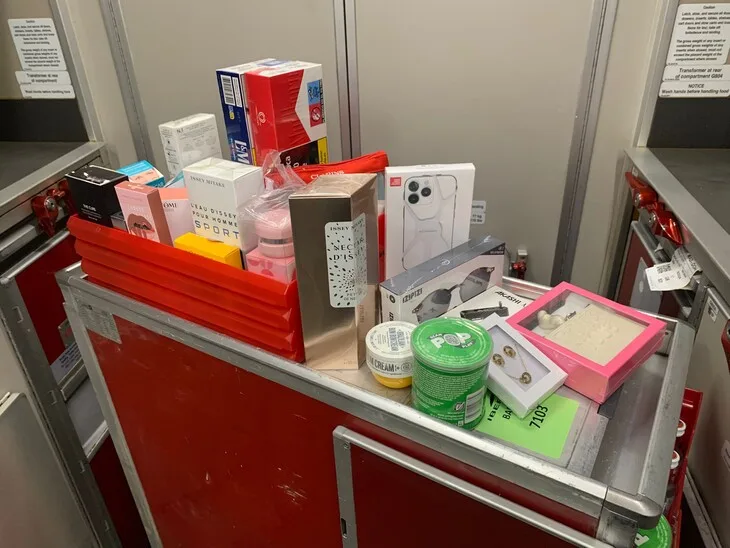
Ryanair and EasyJet: Duty Free Budget Travelers
Even as full-service airlines scale back, some low-cost airlines continue to view Duty Free shopping as a significant revenue stream. Ireland’s Ryanair and the UK’s EasyJet continue to offer in-flight sales of cosmetics, snacks, accessories, and liquor.
While not high-end, these airlines maximise volume. With high aircraft utilisation and dense short-haul networks, inflight retail adds to elevated ancillary yield. And for consumers, it provides an convenient way of buying presents or essentials while on the move.
Which Airlines Have Phased it Out?
While a handful of airlines with Duty Free shopping remain, most major carriers have permanently retired inflight retail. The reasons vary from declining revenue to post-COVID hygiene concerns, and shrinking cabin space all play a role.
In the United States:
- United Airlines ended inflight retail in 2015.
- American Airlines and Delta Air Lines followed soon after.
In Europe:
- Lufthansa shut down Duty Free in 2023 due to a lack of galley space.
- KLM, Finnair, and Scandinavian Airlines (SAS) have also dropped inflight sales.
Elsewhere:
- Qatar Airways discontinued Duty Free shopping in 2019, calling it logistically inefficient.
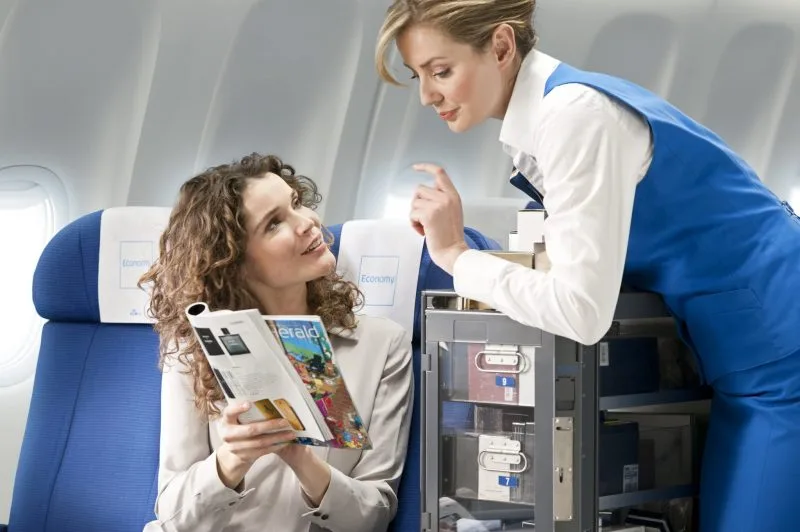
Why Airlines Are Ditching Duty Free?
The decline in inflight Duty Free isn’t simply a pandemic-era response. It’s an indicator of deeper structural issues:
- Lower Profit Margins – With tough competition from airport shopping and e-commerce, onboard shopping no longer generates the same returns as before.
- Cabin Layout Restraints – As more seats are added to aircraft, galley space contracts with fewer spaces for merchandise carts.
- Crew Workflow and Safety – Minimizing crew-passenger interaction was a pandemic-era priority, accelerating the elimination of non-essential amenities like shopping.
- Complex Logistics – Management of inventory on multi-stop international routes generates customs and compliance concerns.
The New Face of In-Flight Shopping
Even while old-fashioned legacy inflight Duty Free disappears, there are some airlines experimenting with new forms:
- Pre-order websites (used by British Airways and others) let passengers shop online ahead of departure.
- In-flight digital catalogs accessed via personal devices will someday eventually replace paper catalogues.
- On-arrival delivery models would permit passengers to buy inflight and receive their items on the destination airport or even home.
These new solutions retain the spirit of Duty Free but fix operational problems.
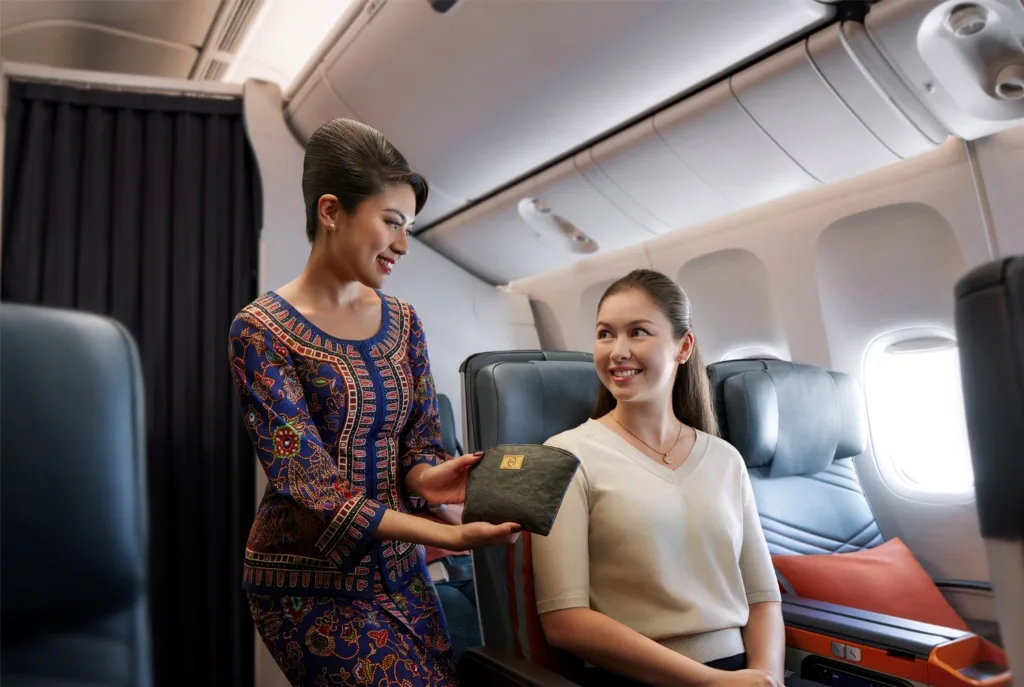
Bottom Line: Who’s Still in the Game?
If you’re hoping to browse a Duty Free catalog at cruising altitude, your options in 2025 are limited, but not gone. Emirates leads the way with a full-service inflight retail offering. British Airways and Iberia still offer onboard Duty Free shopping on long-haul routes, and budget airlines like Ryanair and EasyJet remain committed to retail as an ancillary revenue source.
At the same time, most of the other carriers, especially in the U.S. and most of Europe have abandoned the trolley irretrievably, regarding Duty Free as a relic of a less-efficient period.
But with technology still evolving, there may be other ways that airlines can bring back the enjoyment of shopping aboard, without the cart.
Please join our Telegram Channel for the latest aviation updates.

